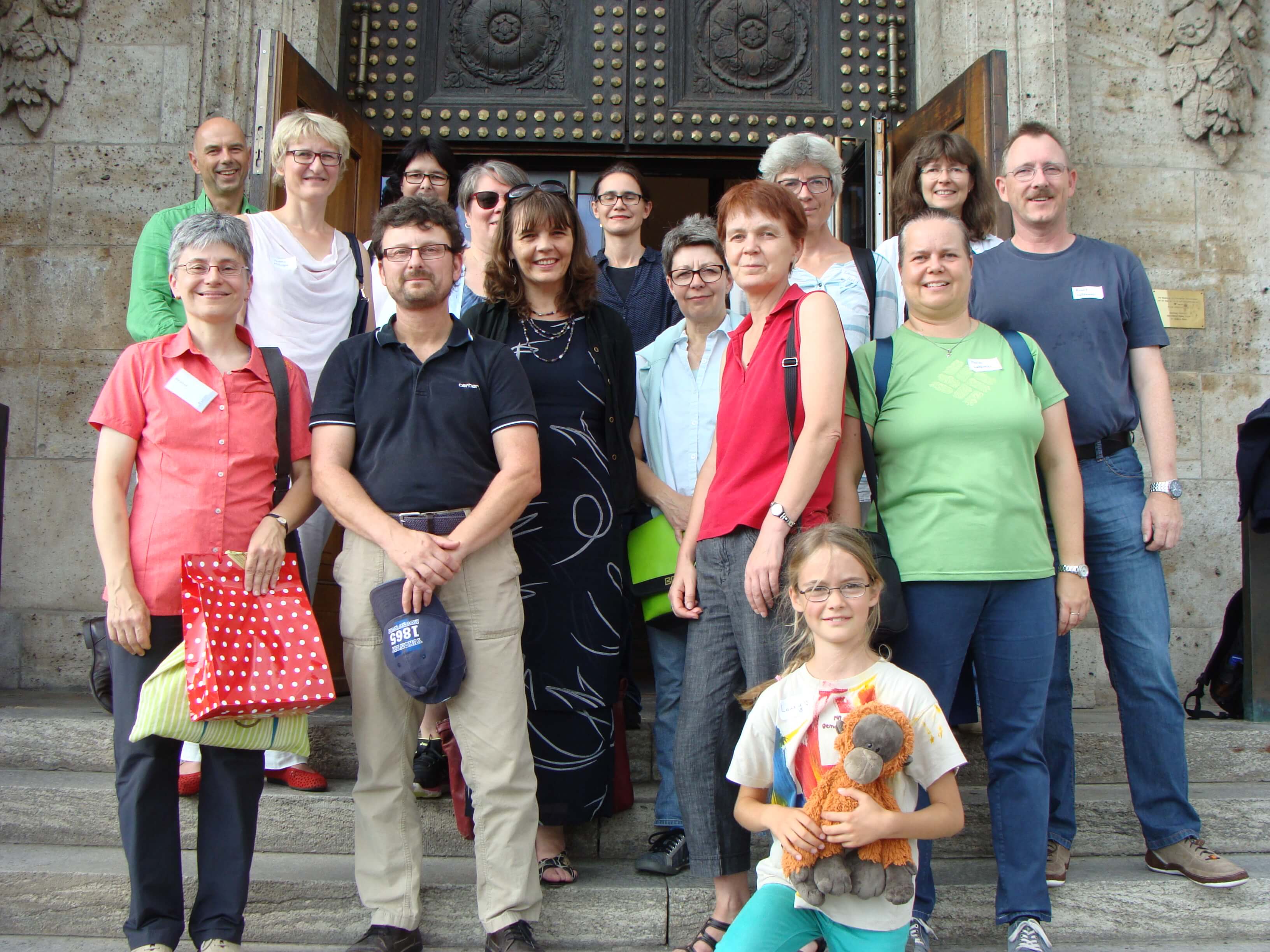
A group of members of the Arbeitsgemeinschaft für Kunst- und Museumsbibliotheken (AKMB) paid a weekend visit to Darmstadt in early September.
The city was once the capital of the Grand Duchy of Hesse and later the state of Hesse, until 1945. This helps to explain the presence of so many grand buildings, though its importance even then in terms of chemical research and production meant it was the target of extensive bombing during WW II.
It is now marketed as the City of Science, with its technical university, the headquarters of the European Space Agency and numerous chemical and high-tech companies. However, we were there to visit Rita Schuck, librarian at the Hessisches Landesmuseum Darmstadt. She and her colleagues regaled us with stories on our highlights tour of the museum, which combines natural history, palaeontology, and art. Based on an Enlightenment collection amassed by the Grand Duke Ludwig I of Hesse, he gifted it to the state in 1834, which continued to collect. The museum building, designed by architect Alfred Messel eventually opened in 1904. It is a classical design in a city that has become renowned for its Jugendstil (Art Nouveau) architecture. Although renovated and extended throughout the 20th century, it closed for 7 years between 2007 and 2014, for a complete refurbishment.

Image credit: Erica Foden-Lenahan
After a break for lunch in the reconstructed mediaeval cloister that is the cafe, we were treated to a visit to the various parts of the library collection. There is a small galleried reading room. But as is typical of so many museum libraries, it has outgrown its original space and is stored in a variety of storage areas, some with better environmental conditions than others. We also had a panoramic view over the city from the museum’s tower meeting room. The library primarily serves the museum and its exhibition programme, but it is also used by external researchers. The library collection is as eclectic as the museum collection and has to cater to a wide variety of subjects.
 Image credit: Erica Foden-Lenahan
Image credit: Erica Foden-Lenahan
After this look behind the scenes of the museum, we went out to the gardens to enjoy the late summer sunshine before reconvening in the evening at a local hostelry for dinner.
The following day was devoted to Jugendstil and the famous Matildenhöhe artists’ colony. The colony is a Gesamtkunstwerk, from its exhibition hall, to its wedding tower, to the Russian church and to its houses, designed by Josef Maria Olbrich and Peter Behrens, among others. We had an informative walking tour around the principle buildings of the colony, including a look inside some of them, although being Sunday, the church was busy with its services. We then enjoyed a picnic in the sunshine, before going our separate ways. Thanks go to Antje Gegenmantel of AKMB and Ruth Schuck for putting together an interesting programme and for sharing the museum and city with us, as well as managing to control the weather, so we saw Darmstadt at its finest!
 Image credit: Erica Foden-Lenahan
Image credit: Erica Foden-Lenahan
A few other highlights for me, although not on the programme, were a visit to the Waldspirale housing development, Friedensreich Hundertwasser’s last project; the discovery of the Baroque Orangerie in the Bessungen area of the city; and the beer garden on the edge of the Mathildenhöhe area.
 Image credit: Erica Foden-Lenahan
Image credit: Erica Foden-Lenahan
Contributor:
Erica Foden-Lenahan
Staatliche Akademie der Bildenden Künste
and Editor, Art Libraries Journal
